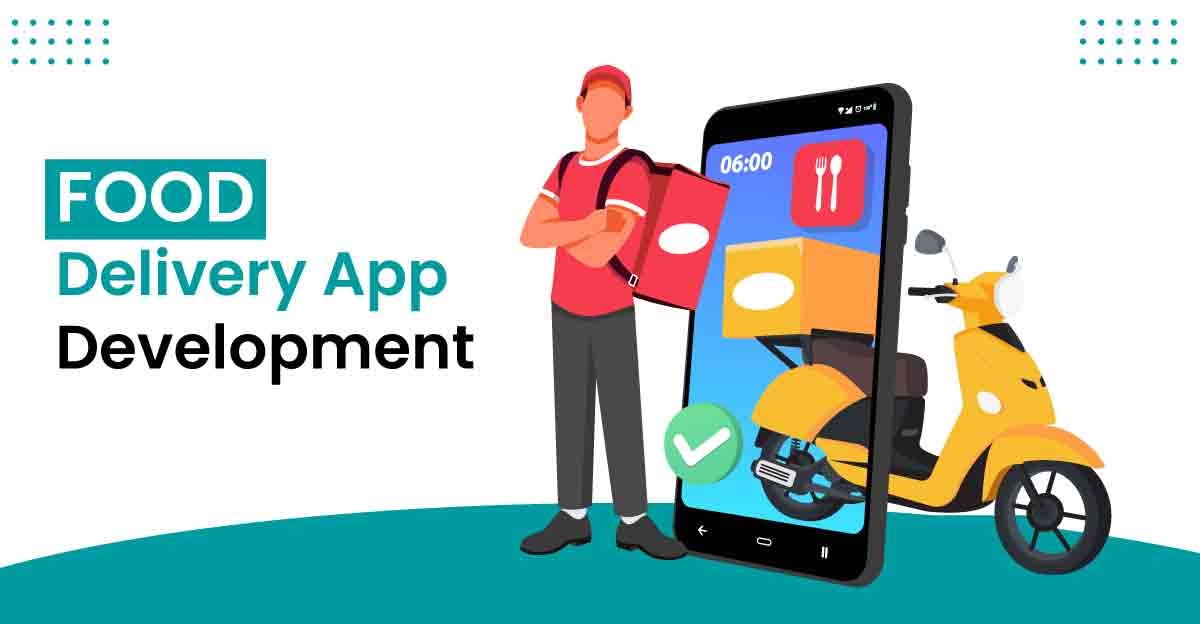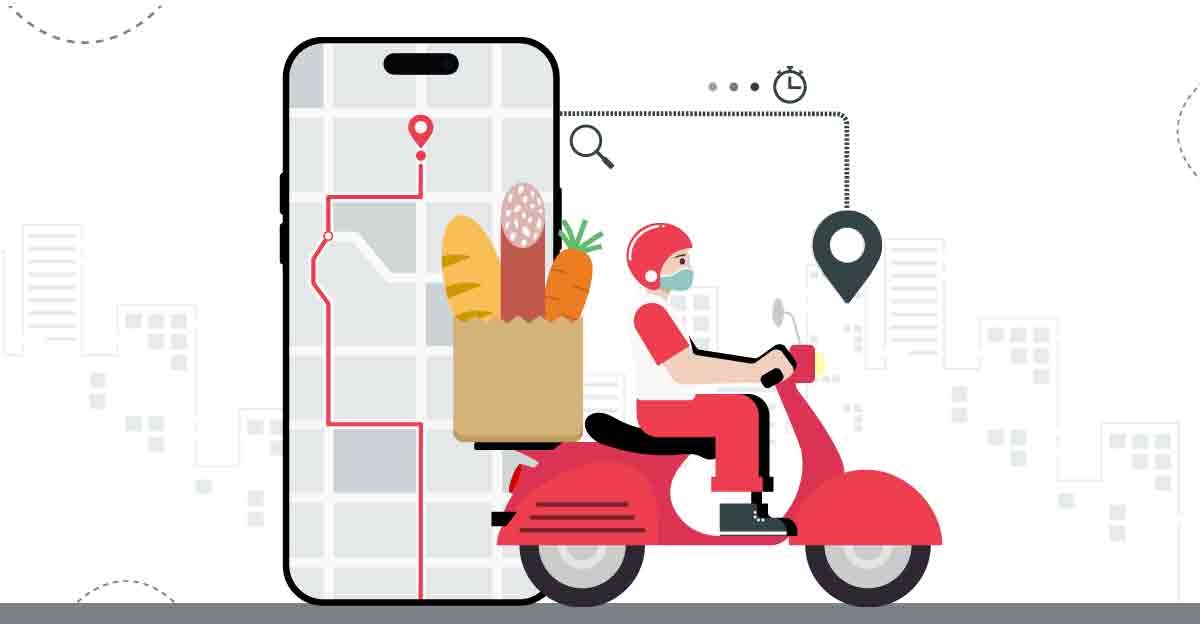Food delivery app development like Zomato app
Food delivery apps have become very popular in recent years, especially during the pandemic, as more people prefer to order food online and enjoy it at home. Zomato is one of the leading food delivery apps in the world, operating in 24 countries and serving more than 70 million users every month. Zomato offers a variety of features, such as restaurant discovery, online ordering, table booking, live tracking, ratings and reviews, and loyalty programs.
If you are interested in building a food delivery app like Zomato, you need to consider several aspects, such as the target market, the business model, the app features, the app design, the app development, and the app marketing. This blog post will guide you through these steps and help you create the best food delivery app.

Define your target market
The first step in food delivery app development like Zomato is to define your target market. You need to identify who your potential customers are, what their needs and preferences are, and how you can solve their problems. This will help you find your unique value proposition and differentiate yourself from other food delivery apps.
Some of the factors that you need to consider when defining your target market are:
The geographic location:
You need to decide which countries or regions you want to operate in and what are the legal and cultural requirements for each market.
The demographic profile:
You need to understand the age, gender, income, education, and lifestyle of your target customers and how they affect their food choices and ordering habits.
Customer behavior:
You need to know how often your target customers order food online, what kind of cuisines they prefer, how much they spend on average, how they pay for their orders, and how they rate and review their experiences.
The customer pain points:
You need to identify the main challenges and frustrations that your target customers face when ordering food online and how you can solve them with your app.
Choose your business model
The next step in building a food delivery app like Zomato is to choose your business model. You need to decide how you will generate revenue from your app and what are the costs involved. There are three main types of business models for food delivery apps:
The aggregator model:
This is the most common model for food delivery apps. In this model, you act as a platform that connects customers with restaurants and delivery partners. You do not own or manage any restaurants or delivery fleets. You charge a commission fee from both restaurants and customers for each order placed through your app. You also charge a delivery fee from customers based on the distance and time of delivery. Zomato follows this model for most of its markets.
The cloud kitchen model:
This is a relatively new model for food delivery apps. In this model, you own or partner with cloud kitchens, which are centralized kitchens that prepare food exclusively for online orders. You do not have any physical restaurants or storefronts. You manage your delivery fleet or partner with third-party delivery services. You charge a fixed price for each dish ordered through your app. You also charge a delivery fee from customers based on the distance and time of delivery. Zomato follows this model for some of its markets, such as India.
The hybrid model:
This is a combination of the aggregator and cloud kitchen models. In this model, you offer both options to your customers: they can order from restaurants or cloud kitchens through your app. You charge a commission fee from restaurants and a fixed price from Cloud Kitchens for each order placed through your app. You also charge a delivery fee from customers based on the distance and time of delivery.
Each business model has its advantages and disadvantages. You need to choose the one that suits your goals, resources, and market conditions.
Define your app features
The third step in building a food delivery app like Zomato is to define your app features. You need to decide what functionalities and services you want to offer to your users and how they will interact with your app. You also need to prioritize your features based on their importance and feasibility.
Some of the essential features that you need to include in your food delivery app are:
User registration and login:
This feature allows users to create an account on your app using their email address, phone number, or social media accounts. It also allows them to log in securely using their credentials or biometric authentication.
Restaurant discovery:
This feature allows users to browse and search for restaurants based on various criteria, such as location, cuisine, rating, price range, availability, etc. It also allows them to view detailed information about each restaurant, such as menu items, photos, reviews, ratings, and opening hours.
Menu browsing and customization:
This feature enables users to view the menu of each restaurant, browse through different categories, and customize their orders by adding or removing items. It should also display prices, ingredients, and any special offers.
Online ordering and payment:
Users should be able to place orders directly through the app and make secure online payments. Provide multiple payment options such as credit/debit cards, digital wallets, and cash on delivery.
Real-time order tracking:
Implement a live tracking feature that allows users to monitor the status of their orders in real-time. Notifications at various stages, such as order confirmation, preparation, and dispatch, enhance the user experience.
Review and rating system:
Integrate a feedback system that enables users to rate and review restaurants and delivery partners. Positive reviews build trust, while constructive criticism helps improve service quality.
User profiles and order history:
Allow users to create profiles to save their preferences, delivery addresses, and payment details. A history of past orders can make reordering easier.
Loyalty programs and discounts:
Implement loyalty programs to encourage repeat business. Offer discounts, promo codes, or cashback rewards to attract and retain customers.
Customer support:
Provide a seamless customer support system through chat, email, or phone. Quick resolution of issues enhances customer satisfaction.
Delivery partner app:
If you plan to have a network like Zomato delivery partner, develop a separate app for them. Include features for order acceptance, navigation, and earnings tracking.
Design your app
The design of your food delivery app is crucial for user engagement. Aim for a user-friendly interface with intuitive navigation. Use appealing visuals, such as high-quality images of dishes, to entice users. Ensure that the design is responsive, providing a seamless experience across various devices.

Consider the following design principles:
Simple and intuitive navigation:
Users should easily understand how to navigate through the app to find restaurants, browse menus, and place orders.
Responsive and visually appealing:
Use high-quality images and graphics to showcase restaurants and menu items. A visually appealing design enhances the overall user experience.
Consistent branding:
Maintain a consistent color scheme, logo placement, and overall branding throughout the app. This fosters brand recognition.
Clear call-to-action buttons
Place prominent buttons for essential actions, such as ordering, tracking, and contacting customer support.
Minimalistic forms
Keep registration and order placement forms simple and concise. Minimize the number of steps required for users to complete actions.
Develop your app
Once you have defined your target market, choose your business model, outlined your app features, and designed the user interface, it's time to proceed with app development. You have several options for app development:
In-house development:
You can hire a team of developers and designers to build an app internally. This gives you full control over the development process but may require significant resources.
Outsourcing:
Partner with an Mobile app development Company or freelancers to handle the development. This option can be cost-effective and allows you to leverage the expertise of professionals.
Use a no-code/low-code platform:
If you have limited technical expertise, consider using no-code or low-code mobile app development platforms. These platforms allow you to build apps with minimal coding skills.
Hybrid approach:
Combine in-house development with outsourcing for specific components of the app. This approach provides flexibility and can optimize costs.
Ensure that your development process follows best practices for security, scalability, and performance. Regular testing is essential to identify and fix any bugs or issues.
Market your app
Once your food delivery app is developed and ready for launch, the next step is to market it effectively. Use online and offline marketing strategies to reach your target audience. Some key marketing activities include:
App Store Optimization (ASO):
Optimize your app's listing on app stores with relevant keywords, appealing visuals, and a compelling description.
Social media marketing:
Leverage social media platforms to create awareness and engage with potential users. Share high-quality images of food, promotions, and user testimonials.
Influencer partnerships:
Collaborate with food influencers or bloggers to promote your app. Their recommendations can have a significant impact on your app's visibility.
Local partnerships:
Partner with local restaurants, cafes, and businesses to cross-promote your app. Offer exclusive deals or discounts to users through these partnerships.
Paid advertising:
Use online advertising channels, such as Google Ads or social media ads, to target specific demographics and drive app installations.
Launch promotions:
Offer special promotions or discounts during the app launch to incentivize users to try your service.
Public relations (PR):
Reach out to local media outlets for coverage of your app launch. Press releases, interviews, and features can create buzz and attract users.
Referral programs:
Implement a referral program where existing users can earn rewards for referring new users to the app. This can help create a viral effect.
Continuously monitor the performance of your marketing efforts and adjust your strategies based on user feedback and analytics.
Conclusion
Building a food delivery app like Zomato involves careful planning, market research, and strategic decision-making. By defining your target market, choosing a suitable business model, designing user-friendly interfaces, developing robust features, and implementing effective marketing strategies, you can increase your chances of success in the competitive food delivery industry. Keep an eye on industry trends, user preferences, and technological advancements to stay ahead of the competition and provide a seamless experience to your users.
